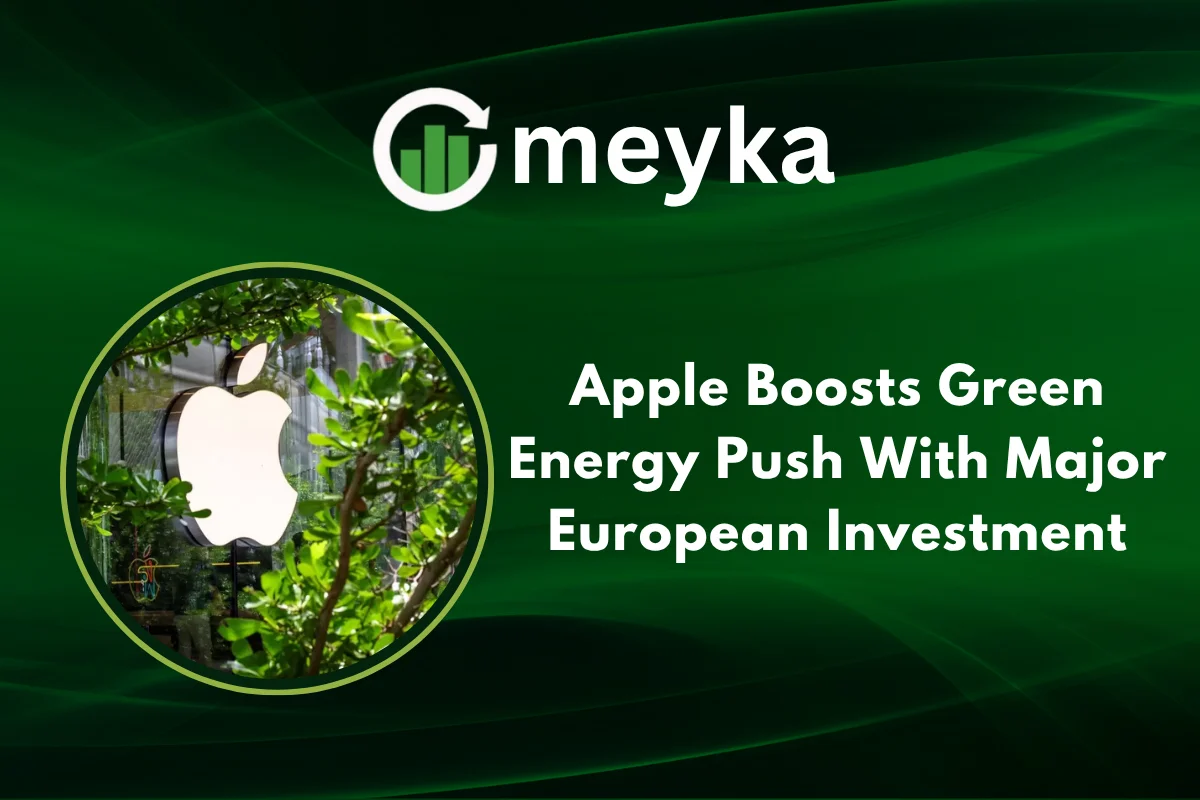Apple Boosts Green Energy Push With Major European Investment
In a powerful signal to global markets, Apple is deepening its commitment to clean energy by injecting more than US $600 million into renewable projects across Europe. This move is not only a bold sustainability gesture, but it has serious implications for Apple’s brand, its investors (including AI stock watchers), and Europe’s energy transition roadmap.
Expanding Renewable Reach: The European Investment Strategy
Apple’s newest initiative will enable 650 MW of new solar and wind capacity in Greece, Italy, Poland, Latvia, Romania, and Spain. These projects are expected to generate over 1 million megawatt-hours of clean electricity annually on behalf of end-users by 2030.
To put that into perspective, that amount of electricity could remove a significant portion of the carbon emissions associated with consumers charging iPhones, Macs, iPads, and other Apple devices. In fact, Apple says product-use electricity accounted for 29 % of its total greenhouse gas emissions in 2024.
Key Deals & Locations
- In Greece, Apple will procure power from a 110 MW solar facility operated by HELLENiQ ENERGY.
- In Italy, the company supports a 129 MW mix of wind and solar, starting with a solar project in Sicily.
- In Poland, Apple backed Econergy’s 40 MW solar plant via a 19-year offtake agreement.
- In Romania, a 99 MW wind farm by Nala Renewables will supply energy via a long-term agreement.
- In Latvia, Apple has entered a power purchase with European Energy for a 110 MW solar farm.
- In Spain, the Castano solar farm (134 MW) is already operational and part of Apple’s support.
Through these moves, Apple targets adding 3,000 GWh of renewable generation capacity across European grids by 2030.
Why Apple Is Doing This: Motivation & Strategic Benefits
1. Matching Usage with Clean Electricity
Apple’s 2030 goal is to achieve carbon neutrality across its full footprint, including product use. Rather than relying solely on carbon offsets or external credits, the company is investing in real energy infrastructure to “match every watt of charging electricity” with clean sources.
2. Strengthening Brand Reputation and ESG Appeal
Investors tracking AI stocks or broader tech portfolios increasingly factor in ESG (environmental, social, governance) performance. Apple’s renewable investments help boost its green credibility, potentially supporting its valuation among sustainability-conscious investors.
3. Grid Leverage & Market Presence
By facilitating new clean projects, Apple deepens ties with European energy markets, positioning itself not just as a consumer of power but a stakeholder in renewable infrastructure. This could help Apple influence grid policies, pricing structures, and long-term access to green electrons in key regions.
4. Supply Chain & Scaling Impact
Beyond direct projects, Apple’s Supplier Clean Energy Program already supports over 19 GW of renewable supply for its global manufacturing operations. The European investment dovetails with that program by covering emissions from product use in the region.
Risks, Challenges & Uncertainties
Grid Integration & Timing
Building solar and wind farms requires coordination with local grids, permitting, and interconnection processes. Delays or capacity issues could slow deployment, reducing near-term impact.
Regulatory & Policy Risk
Europe’s regulatory landscape is dynamic. Policies on feed-in tariffs, power purchase agreements (PPAs), subsidies, and carbon pricing may shift, creating uncertainty around long-term revenue streams from energy projects.
Capital Intensity & Return Pressure
While Apple is well-resourced, investing hundreds of millions in infrastructure projects carries capital risk. Returns may take years, and cost overruns or operational issues could cut into projections.
Carbon Accounting & Attribution
Critics may argue Apple’s approach could double-count emissions reductions or overly attribute grid decarbonization to Apple. Transparent reporting will be critical to maintain credibility.
Implications for Apple Stock & Tech Sector
From the vantage point of stock research and investing in AI stocks or broader tech portfolios, Apple’s green push offers interesting signals:
- Stability through diversification: Energy investments give Apple a quasi-utility dimension alongside its hardware, software, and services businesses.
- ESG premium potential: Strong environmental credentials may make Apple more attractive to institutional investors with ESG mandates.
- Opinion leadership in tech decarbonization: By leading in clean energy, Apple positions itself as a model for others (like Microsoft, Google), which may influence industry norms and expectations.
- Longer-term optionality: If energy prices or carbon regulation tighten further, owning clean power assets could add upside beyond Apple’s core business.
Still, financial markets will likely remain focused on product cycles, revenue growth, margins, and competition with other AI stocks and tech stalwarts. The green energy investments complement those core drivers, rather than replace them.
Looking Ahead: What to Watch
- Project progress updates — Are the 650 MW projects online on schedule?
- Published results — What are the capacity factors, revenue, and grid impact?
- New regions & scaling — Will Apple expand similar strategies to Asia, Latin America, and Africa?
- Reporting transparency — Will Apple publish independent audits to confirm emissions attribution?
- Market response — How will investors and ESG funds respond in earnings cycles and guidance?
Apple’s European green energy commitment is bold in scale and symbolic in message. It moves the company beyond passive pledges into active energy infrastructure. If executed well, it may set a new bar for how tech firms integrate sustainability with core business strategy.
FAQs
Apple signs long-term power purchase agreements (PPAs) and enables infrastructure via dedicated off-takers. This helps ensure the clean energy produced is matched to consumption in the region.
The near-term financial impact will be modest compared to Apple’s core business. But as projects scale and mature, they could yield stable revenue streams and bolster Apple’s longer-term valuation, especially given growing investor interest in ESG performance.
Yes, the model is replicable. But it requires deep pockets, strong grid partnerships, and long-term vision. What Apple does here may serve as a blueprint for peers like Microsoft, Google, or Amazon seeking to turn sustainability promises into infrastructure.
Disclaimer:
This content is made for learning only. It is not meant to give financial advice. Always check the facts yourself. Financial decisions need detailed research.






